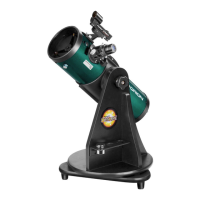18
19
How to Stargaze
How to Stargaze
Conditions for Observing
Seeing and Transparency: Atmospheric
conditions vary significantly from night to night,
caused mostly by the jet stream flowing west
to east and over us in Maine. There are times
when the jet stream is NOT over us and condi-
tions can vary from good to excellent, but this is
rare. Most of the time, conditions are typically
fair to good, as shown in the star image below.
Seeing refers to the steadiness of the Earth’s
atmosphere. In conditions of poor seeing,
atmospheric turbulence causes objects viewed
through the telescope to look fuzzy and hard to
focus. If you cannot focus on a star or anything
else, pack up and go have a cup of hot chocolate,
tea or coffee and watch Cosmos.
Transparency refers to clarity of the air. Is it
dry or are there high thin clouds that will affect
transparency? If it’s not too bad, you can still
have a decent time observing.
In conditions of good seeing, star twinkling
is minimal and images appear steady in the
eyepiece. Seeing is best overhead, distorted at
the horizon. Good transparency is especially
important for observing faint objects. Transpar-
ency is judged by the magnitude of the faintest
stars you can see with the unaided eye. Mag. 1
is very bright, 2 is dimmer, and so on… 4th
magnitude or fainter is desirable.
Looking at the Little Dipper will show you how
good the viewing is. If you can see all the stars,
you are doing pretty well. Be sure to wait until
your eyes adapt to the dark. This can normally
take 15 to 20 minutes. Once adapted, you’ll be
surprised at how well you can see.
The Little Dipper
Conditions for Seeing and Transparency.
Warning:
Never look directly at the
Sun through your telescope or its finder
scope – even for an instant – as permanent
eye damage could result. Do not point the
telescope at the Sun, as parts will melt!
Children should use this telescope only
with adult supervision.

